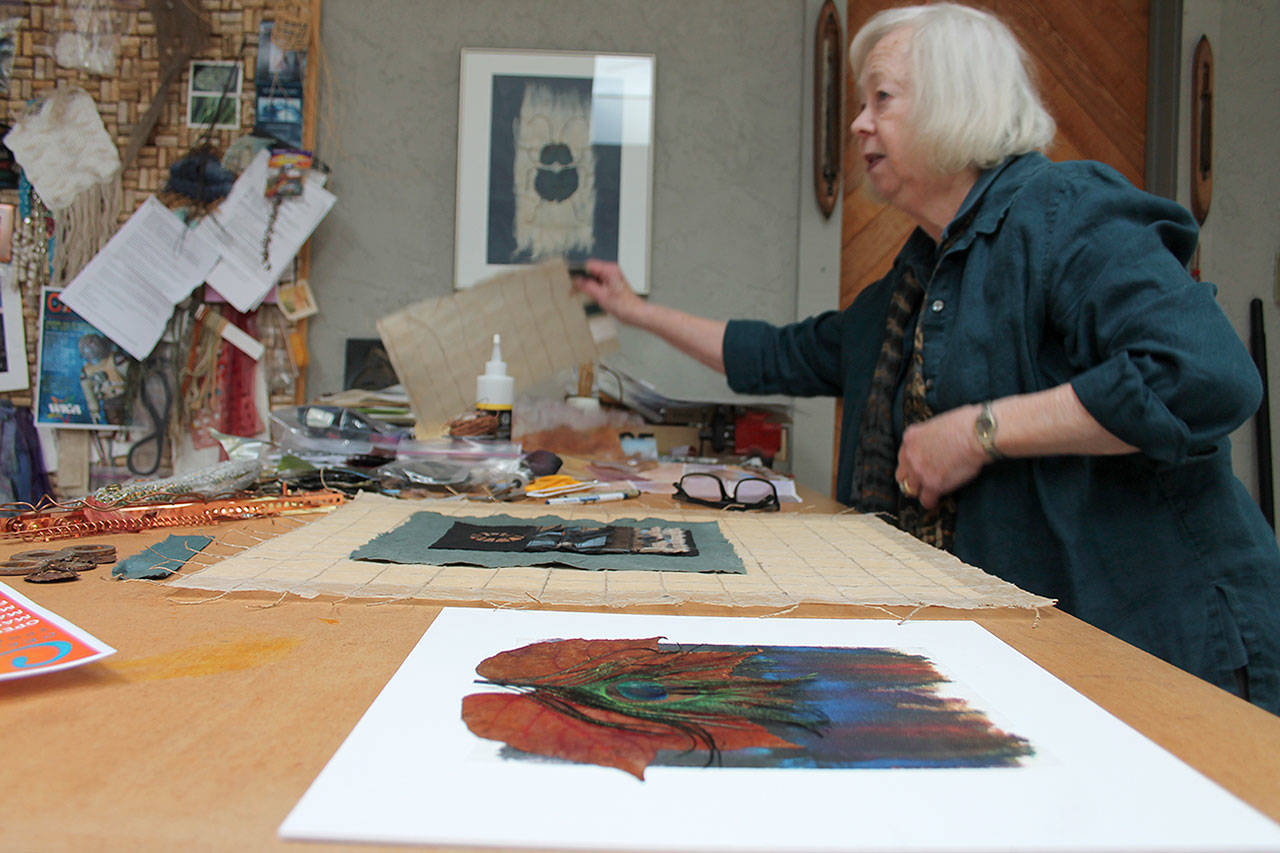The old cliché adage of “one man’s trash is another man’s treasure” is often overused, but seven South Whidbey artists are truly bringing the saying to life.
The final product of these artists’ resourcefulness, the occasional sifting through recycling bins and borderline hoarding for some, is the C.R.A.P. (Creative Recycled Art Projects) Exhibition. And although the name sounds questionable, the artists have a knack for transforming used parts and goods into opulent works of art.
“I definitely look at junk differently,” Freeland weaver and artist Natalie Olsen said. “I think once you have your eyes open, you tend to look at how you could utilize this and that piece of art. Everything is a treasure.”
The C.R.A.P. Exhibition features work that utilizes recycled and unusual materials that can be found in landfills, on the roadside and in scrap heaps. The art show displays the work of seven female South Whidbey artists who vary in style, including Buffy Cribbs, Katrina Hude, Alicia Lomne, Natalie Olsen, Janet Pheifer, Sarah Primrose and Sara Saltee. The exhibit began Friday at Lasher Gallery in Whidbey Island Center for the Arts (WICA) and continues from 1-5 p.m. on the weekends from March 3-12.
Tickets are free; 30 percent of sales proceeds go toward WICA programs.
For many of these artists, their fascination in the medium lies in the materials. The group of featured women are carpenters, weavers and mixed media artists, who regularly handle materials in their workdays even if they aren’t full-time artists. For Freeland weaver Natalie Olsen, leftovers from her textile studio and used camera parts from her husband’s photography studio initially piqued her interest in repurposing materials into works of art.
“Sometimes for Valentine’s Day, my photographer husband would give me a stained cloth from his cartridges as a sort of joke,” Olsen said. “But they’re beautiful, and I started to think it would be fun to use that to create something. I had plenty of scrap since I’m a textile artist, so it seemed to fall into place.”
Olsen’s work utilizes fabrics and yarns more than other featured artists due to the materials leftover from her Freeland studio. The materials she uses can also show what her household consumes — Olsen jokes that she has heaps of teabags and wine foils. But those materials leave her with some intriguing final products, including small and colorful pieces made from fabrics, and her specialty this year: loin cloths.
“Don’t ask me how I came up with the idea to make loin cloths,” Olsen joked.
Other works look more like what one would expect to find in a landfill: larger pieces that utilize mechanical junk, building equipment, wires, etc. Janet Pheifer, a Freeland-based artist who came up with the idea to host a repurposed art show, chiefly aims to get her hands on that material. She has easy access to that junk due to her day job as a carpenter, and her pieces tend to be more metallic than Olsen’s work.
Pheifer is fascinated by the materials that make, well, anything. It’s clear she’s a builder, who loves the process of taking things apart and piecing them back together. Her work features a hefty amount of wire, particularly her favorite material copper, and a fair amount of metal found in parts of old televisions, radios and fans.
“All these skills come from years of growing up with recycled goods since my dad was an iron worker and a jack of all trades — basically a scavenger,” Pheifer said. “With that background, I always loved creating things from my work in construction, which is really an art form in itself. It’s a craft where you’re creating an experience for others, which is what art is to me.”
Although one may expect the workspaces of these artists to be chaotic scrap heaps, they tend to be extremely organized. Labeled boxes, bins, jars and plastic bags cover the walls and drawers. Still, Pheifer jokes she has “more advanced hoarder tendencies.” Keeping materials tends to be the method of collecting stuff for the artists, although dumpster diving is involved on occasion. Pheifer says she will make pitstops at Island Recycling in Freeland and offer to buy pieces that catch her eye. However, her main source of material is other businesses who will hold onto things for her rather than throw them away.
“Some people who do this don’t ask around for other people’s junk, but I won’t be afraid to ask around,” Pheifer said. “Some of us are just a little more nutty than others.”



